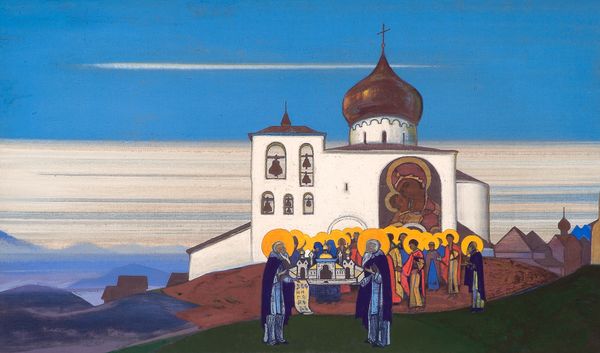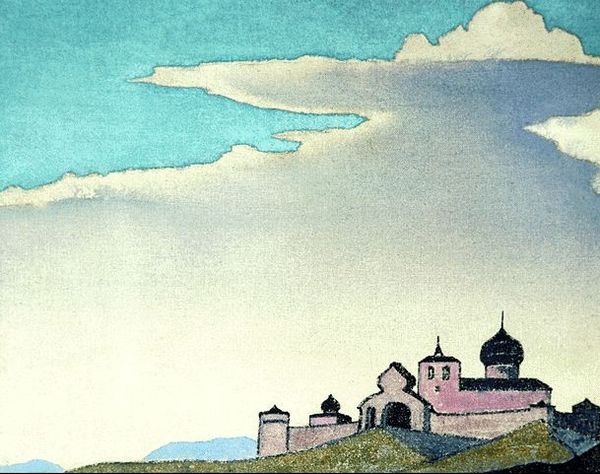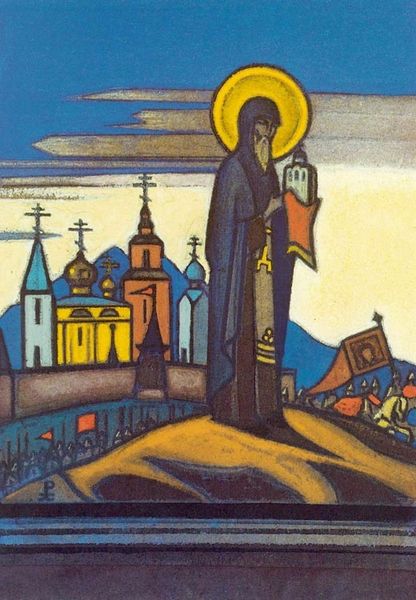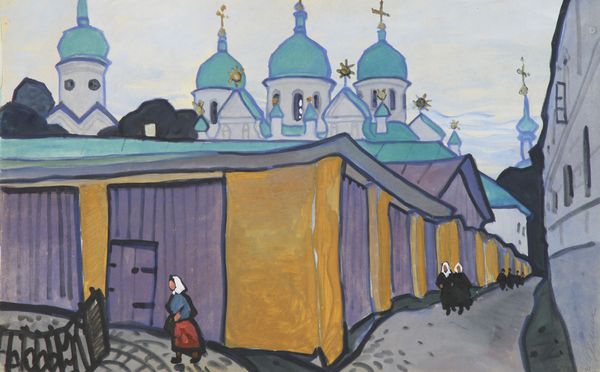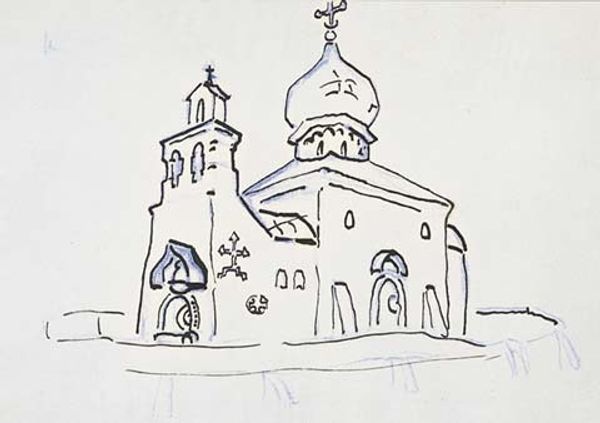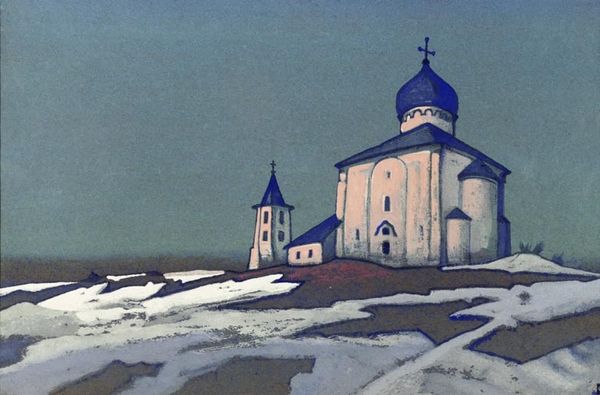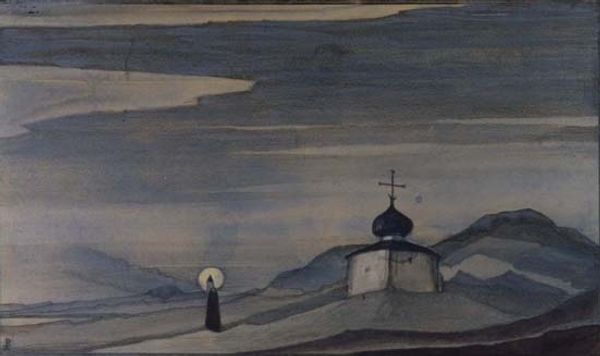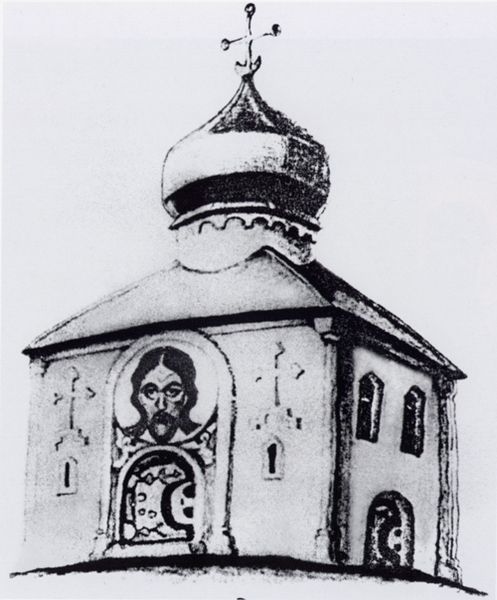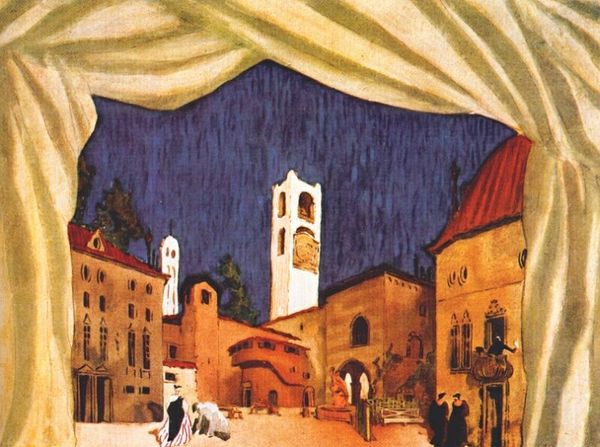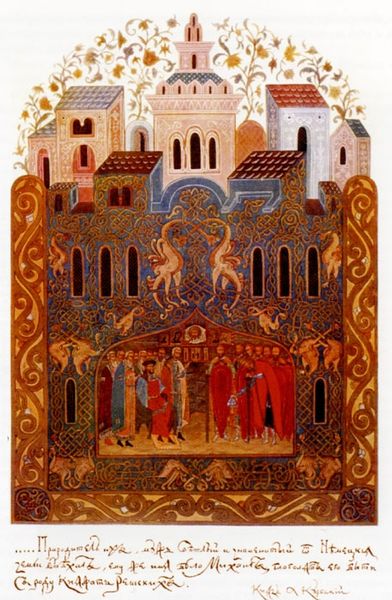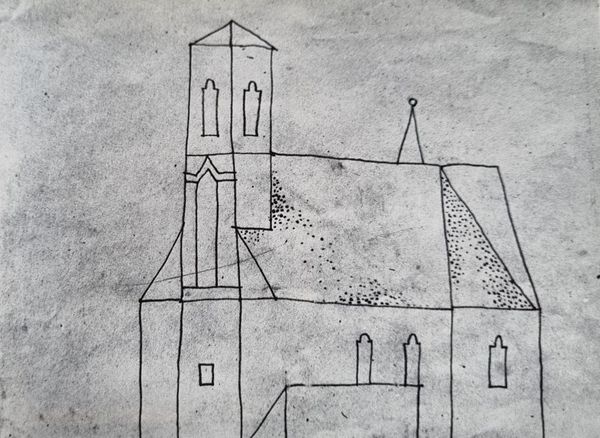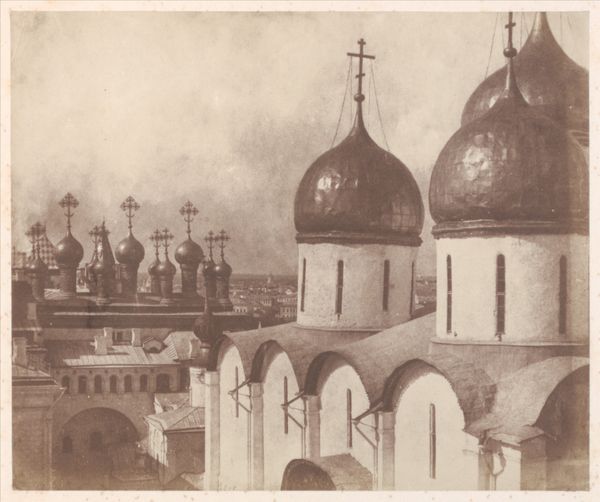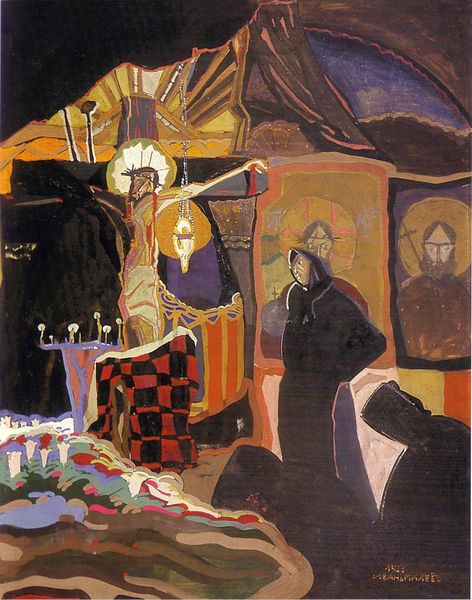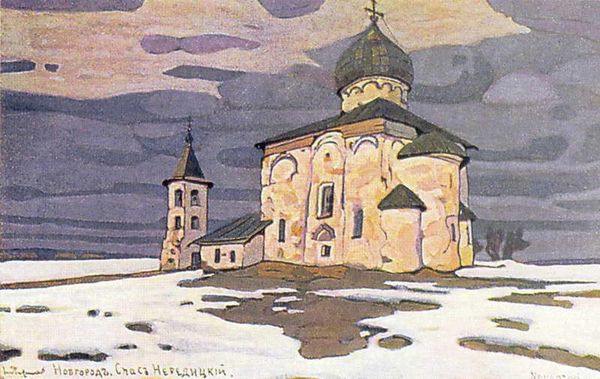
Copyright: Public domain
Curator: Here we have Nicholas Roerich’s watercolor painting "Pskov," created in 1935. It resides at the Novosibirsk State Museum of Fine Arts in Russia. Editor: The overall effect is one of quiet, almost reverential awe. The pale washes of color give it a dreamlike quality, and the architectural shapes have a simplified, geometric presence that feels solid, despite the medium. Curator: Indeed, Roerich was deeply invested in Russian history and spiritual traditions, often using architectural motifs as symbols of cultural endurance. He participated actively in the Russian Avant-Garde movement, contributing significantly to stage design and embracing its principles in his easel painting, which often reflects folk art aesthetics. Editor: The imagery strikes me as powerfully evocative. I notice the character bearing an axe, situated in front of the pale church building. Is that perhaps St. George, bearing the iconic symbol of battle against destructive forces, an attempt to guard cultural identity in times of social changes? Curator: Interesting speculation. Remember that during this period, the Soviet government’s attitude toward religious sites was complex and frequently destructive. Some churches were preserved, but many others were repurposed or demolished. Perhaps the character, St. George, signals a sense of custodianship, of safeguarding Russian cultural heritage. Editor: It does evoke the feeling of guarding something precious, something on the verge of being lost. There's an urgency embedded in this serene scene, isn’t there? That’s why it feels relevant and emotionally impactful for a contemporary viewer. Curator: Roerich’s painting illustrates a connection to Russia's spiritual and artistic legacy. He presents a dialogue between past and present, which might also reveal Roerich’s position on art’s social role. He certainly wanted it to preserve cultural identity and national consciousness. Editor: Seeing the layers of history, belief, and anxiety interwoven in such a deceptively simple scene enriches the experience immeasurably. Roerich leaves us to contemplate this landscape with new eyes.
Comments
No comments
Be the first to comment and join the conversation on the ultimate creative platform.
